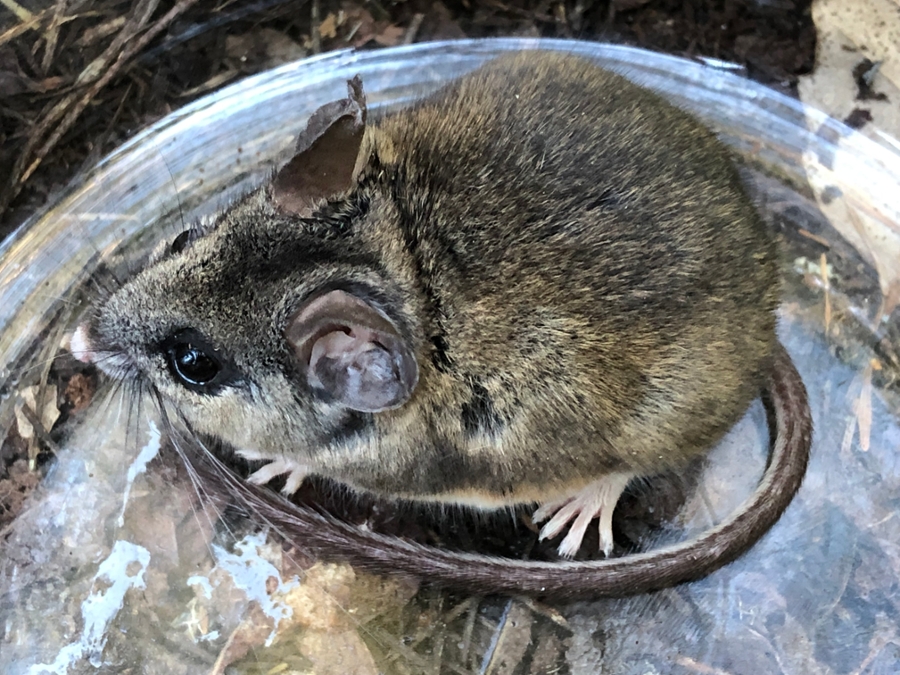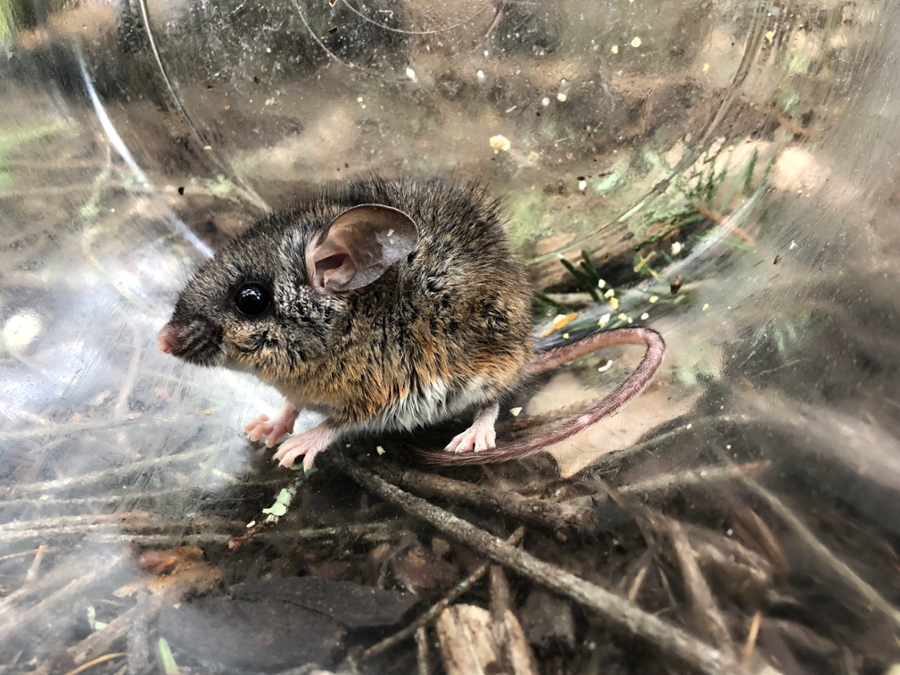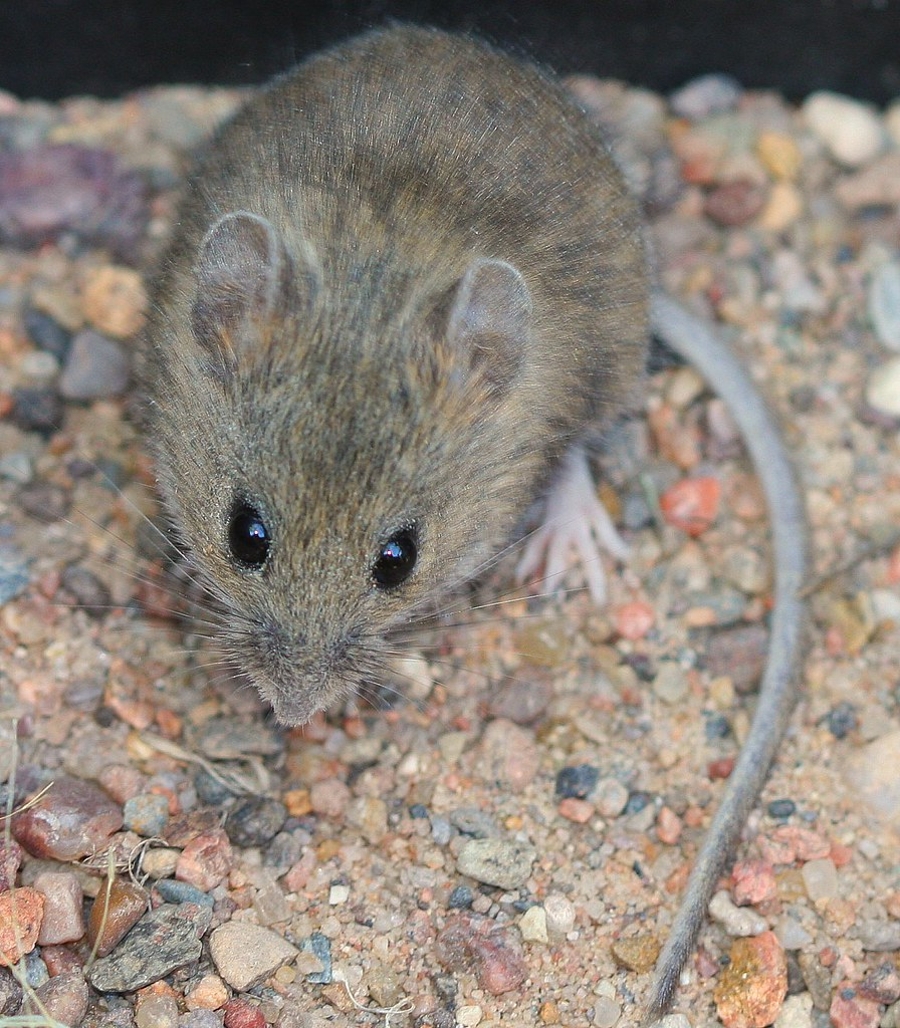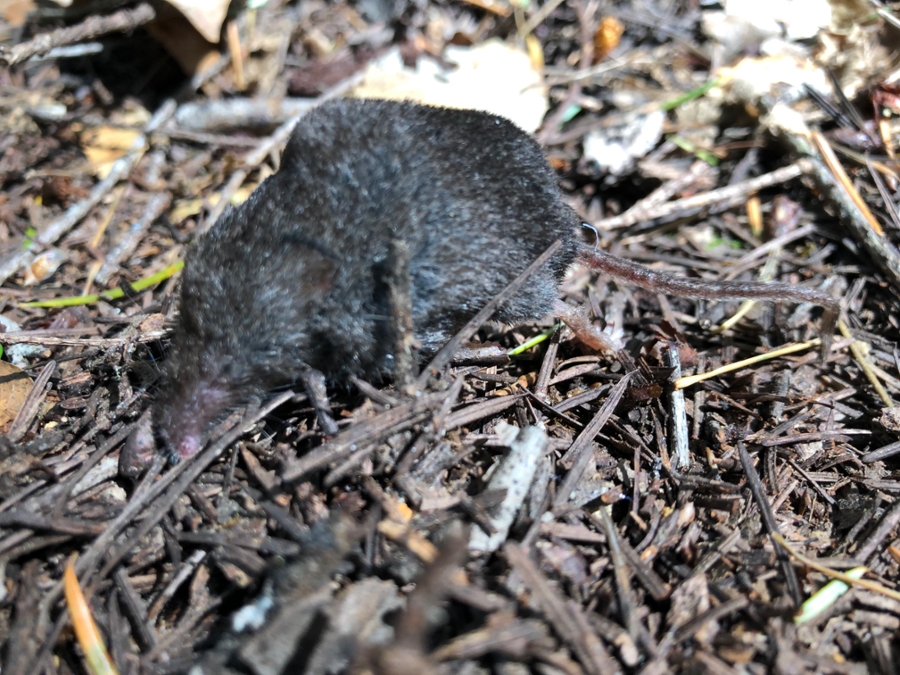Small mammals of the UCSC Campus Natural Reserve
Here are a few of the small mammals species that can be found on the main UCSC campus, including on the Campus Natural Reserve
By Gabby Reynosa, UCSC Biology (2019), Small Mammal Undergraduate Research in Forests (SMURF) intern fall 2018 and spring 2019
Small Mammal ID guide---Forest Ecology Research Plot and Fort Ord Natural Reserve
(All animals were photographed during research conducted under a California Department of Fish and Wildlife Scientific Collecting Permit for the UCSC Natural Reserves, SCP#12383)
Microtus californicus, California vole
(Photo: Alex Jones, UCSC Campus Natural Reserve)
Body Size: 120.5-146mm
Characteristics: grizzled brown color on back, often flecked with black
and lighter gray below, bicolored tail, pale brown or grayish feet, inconspicuous furred ears
Habitats (range-wide): dry, grassy slopes, salt or freshwater marshes, damp meadows;
variety of elevations
Habitats (UCSC): grassland, coastal prairie, occasionally within openings in mixed-evergreen forest
Range: Southwest Oregon, most of California
Lifespan: 1 year
Diet: grasses, seeds, vegetation
Reproduction: breed through the year; first reproduce at 2 months old; 1 or more litters per year;
4-8 offspring per litter; gestate for 21 days; weaned at 17 days
Neotoma fuscipes, Dusky-footed woodrat
(Photo: Gabby Reynosa, SMURF intern)
Body Size: 158-257mm
Characteristics: gray/buff brown on back, pale gray/white underneath, head usually grayer than body
Habitat: hardwood forests and dense shrublands
Habitat (UCSC): northern maritime chaparral, mixed-evergreen forest, redwood forest
Range: North Pacific, Mexico, Northern California coastal forests, Mojave desert, Sonoran desert
Lifespan: exact lifespan is unknown but others in the genus live 2-3 years
Diet: seeds, fruits, nuts, vegetation
Reproduction: first reproduce at 6 months old; 1 litter per year; 2-3 offspring per litter; weaned at 27 days
Peromyscus californicus, California deer mouse
(Photo: Gabby Reynosa, SMURF intern)
Body Size: 101-127
Characteristics: yellow/gray with black flecks on back, white underside and feet, bicolor tail that is dark on top and light underneath, tail same length or longer than body
Habitat: forests, ravines, chaparral, brushy areas
Habitat (UCSC): northern martime chaparral, mixed-evergreen forest
Range: Southeastern and Coastal California
Lifespan: 16 months
Diet: acorns, seeds
Reproduction: mature at 2 months old;, breeds through the year (except winter); first reproduce at 1.5 months; may be several litters a year; 2 offspring per litter; gestate for approximately 1 month
Peromyscus truei, Pinyon mouse
(Photo: Gabby Reynosa, SMURF intern)
Body Size: 95-108mm
Characteristics: dorsal color can be lead colored, brownish, cinnamon, or rich tawny, separated sharply from white underparts, tail is hairy, dark on top and white on underside, ears longer than hind feet and sparsely haired, large protruding eyes, pointed nose, long whiskers, white feet
Habitat: arid foothill lowlands, seldom found above 7000 ft.; areas of pinyon and juniper where rocky slopes dominate
Habitat (UCSC): northern maritime chaparral, mixed-evergreen forest
Range: Mexico, US (NV, OK, CA, OR, NM, CO, AR, WY, TX, ID)
Lifespan: 5 years
Diet: insects, seeds, vegetation
Reproduction: first reproduce at 1 month old; 3-5 litters per year; 3-4 offspring per litter; gestate for 1 month
Reithrodontomys megalotis, Western harvest mouse
(Photo: J.N. Stuart, Creative Commons license)
Body Size: 47-73mm
Characteristics: brown on back with grayish-white/ pale cinnamon underside, sparsely haired tail, large naked ears, longitudinal groove on each incisor
Habitat: grasslands, sagebrush, weedy waste areas, fence lines, cattail-choked marsh edges (as long as there is overhead cover)
Habitat (UCSC): grassland, coastal prairie
Range: wide range, Great Lakes to Pacific Coast, on Santa Catalina and Santa Cruz Island
Lifespan: 18 months
Diet: insects, seeds
Reproduction: breed every month of the year in some parts of its range; usually doesn’t breed for 2 months (Jan and March in CA); 4-5 litters per year
Sorex trowbridgii, Trowbridge shrew
(Photo: Gabby Reynosa, SMURF intern)
Body Size: 60.5-73mm
Characteristics: velvety dark gray fur with undersides almost as dark as back, slightly brownish in summer, tail sharply bicolored and dark on top, ears hidden well in hair, long abundant whiskers, feet are whitish to light tan
Habitat (range-wide): mature forests with ground litter, prefers dry ground beneath Douglas-fir but also occupies ravines, swampy woods, and areas where deep grass borders salmonberry thickets
Habitat (UCSC): redwood forest, mixed-evergreen forest
Range: along Pacific coast from Canada to Los Angeles
Lifespan: 18 months
Diet: invertebrates, seeds, vegetation
Reproduction: breeds from February to early June in Sierra Nevada; 1-2 litters per year; 4-5 offspring per litter




